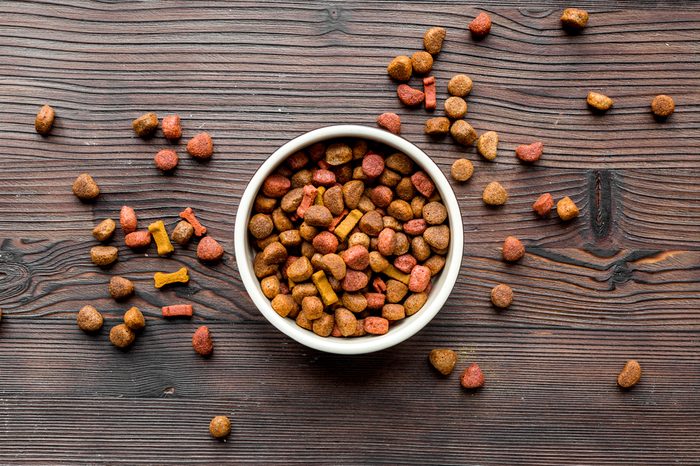
Double-check that label!
We all want the best for our loyal four-legged pals, especially when it comes to the food we give them. But it can be tricky to tell the good options from the not-so-good options—and even the downright dangerous ones. “With so many different pet foods on the market, it can be overwhelming to select the ‘best’ food for your dog or cat,” agrees Rachel Barrack, DVM, founder of Animal Acupuncture in New York City. That’s why it’s always a good idea to discuss your pet’s specific needs with your veterinarian before making any major dietary changes. You should also know what to look for before buying that new pet food you’re considering…so you can pass on it. And if you’ve got a canine companion, check out the best dog food brands veterinarians feed their own pets.
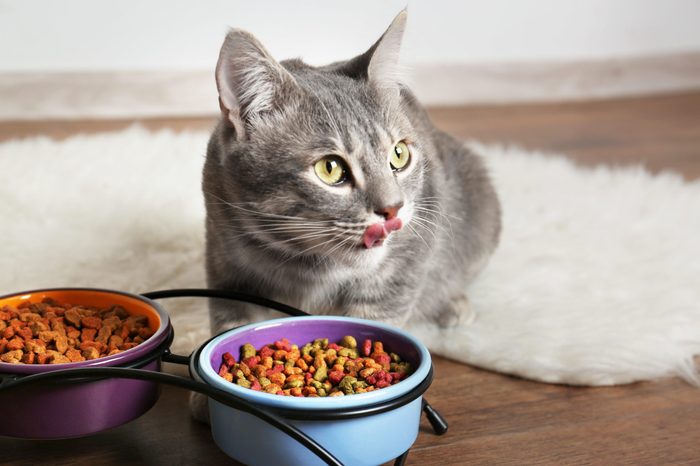
Artificial coloring agents
Artificial colors are among the ingredients that Dr. Barrack says should be universally avoided. While some of the ones that are found in pet food are approved by the FDA for use in humans, questions remain about their safety. Items with these products are easy enough to avoid, and many pet parents choose to do so out of an abundance of caution. National retailer Petco stopped selling all food and treats that include artificial colors, including FD&C Red No. 3, in May 2019.
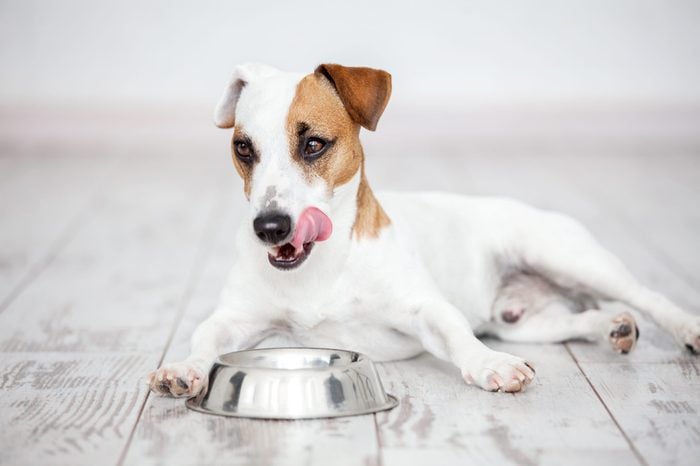
Artificial sweeteners
Dr. Barrack also recommends avoiding dog foods with artificial sweeteners. Many—including aspartame, saccharin, and sucralose—can be dangerous to dogs in large quantities. And while you’d likely never find it in dog food, make sure that your pup never eats human food with xylitol (or other things he shouldn’t be eating, like sugar-free gum or toothpaste). It is extremely toxic to dogs and can cause hypoglycemia, seizures, and even liver failure. Instead, this is the very best diet for dogs, according to vets.
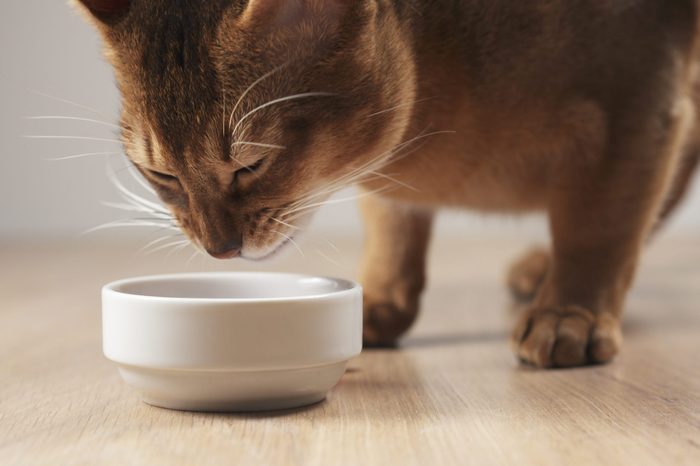
Artificial preservatives
Leave food with BHA, BHT, or ethoxyquin on the shelf as well, says Dr. Barrack. Some research indicates that consuming large amounts of ethoxyquin, in particular, may contribute to various health problems. Again, many people prefer to err on the side of caution when it comes to their beloved pets. And just an FYI: These preservatives are banned in pet food in Europe and Australia, so that should tell you something! By the way, these are the signs your pet has food poisoning.
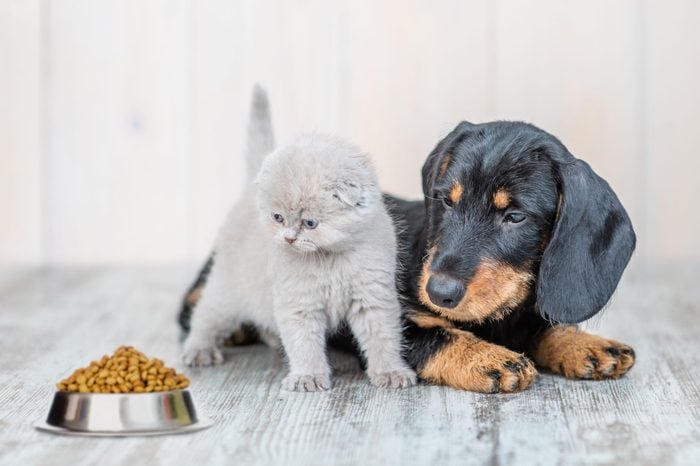
Generic meat by-products
While some experts don’t consider named by-products (chicken, turkey, beef) in pet food to be harmful to pets, they are generally considered inferior nutritionally. It’s worth noting that by-products are not cleared for human consumption. “By-products, including bone meal, are the leftover waste from animal carcasses rendered for human consumption, and they do not actually contain much meat,” explains Dr. Barrack. The type that you definitely need to avoid, though, are generic by-products. You have no way of knowing where by-products with vague names, such as “meat and bone meal” or “meat by-products,” came from. They can even contain meat from poultry that was already dead—for an unknown period of time—upon arriving at the slaughterhouse.
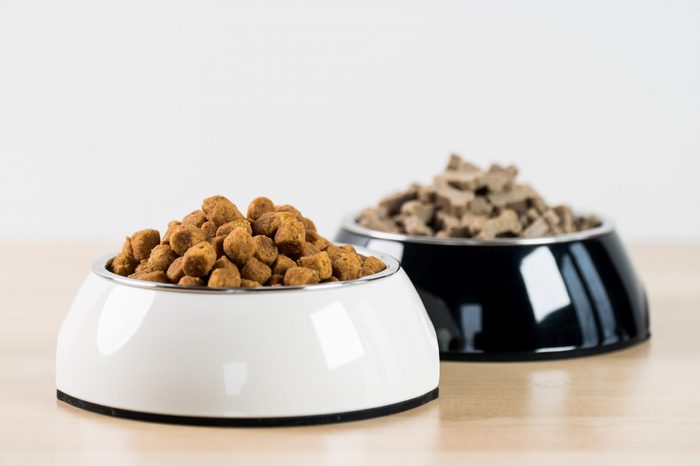
Propylene glycol
“This is added to low-quality food for flavoring and moisture,” says Dr. Barrack. “However, in large quantities, it can be fatal to both dogs and cats. In cats, consumption can result in Heinz body anemia, while in dogs it can cause seizures and severe neurological symptoms.” It is chemically derived from anti-freeze, she adds. Don’t miss these silent signs your “healthy” cat is actually sick.
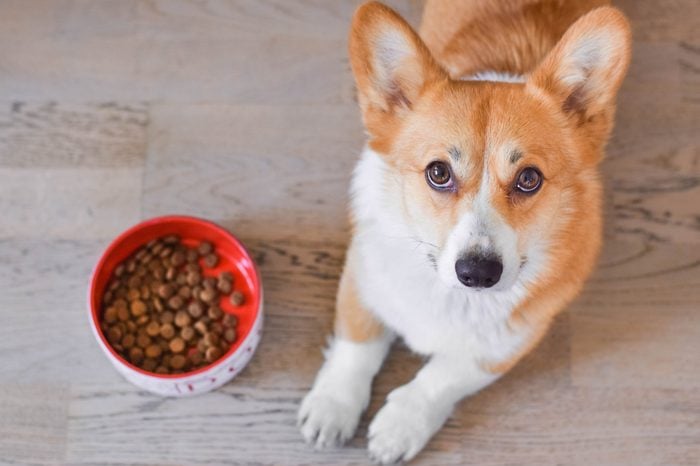
Rendered fat
Rendered fat is made via the same high-temperature process as meat meal. This ingredient boosts flavor in pet food, explains Dr. Barrack, but “it’s also a breeding ground for microorganisms, such as bacteria and mold.” In the same way that clearly identified by-products are a better choice than generic ones, fat in pet food should also be specifically named. Look for ingredients like beef fat, salmon oil, or chicken fat, rather than “rendered fat.”
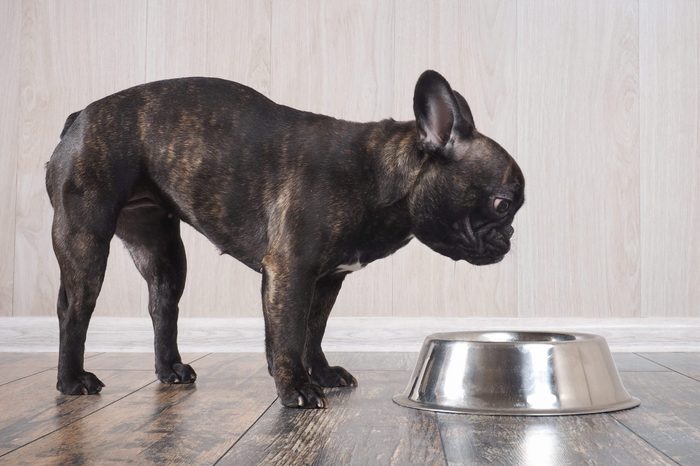
Stuff that belongs in a foodie’s salad
Ingredient labels are increasingly used as marketing tools and, therefore, can be sneaky. Manufacturers include ingredients expressly to appeal to pet parents, like artichokes, kale, kelp, blueberries, apricots, or parsley, but there is no evidence that any of this is beneficial to pets. The problem? “The more ingredients, the more time and expense to ensure the [food] adheres to the nutrient formulation and avoids unsafe levels of contaminants,” said Lisa M. Freeman, DVM, in a report. “Some kelp sources have high levels of arsenic. Unfortunately, this degree of quality control is not always practiced.”
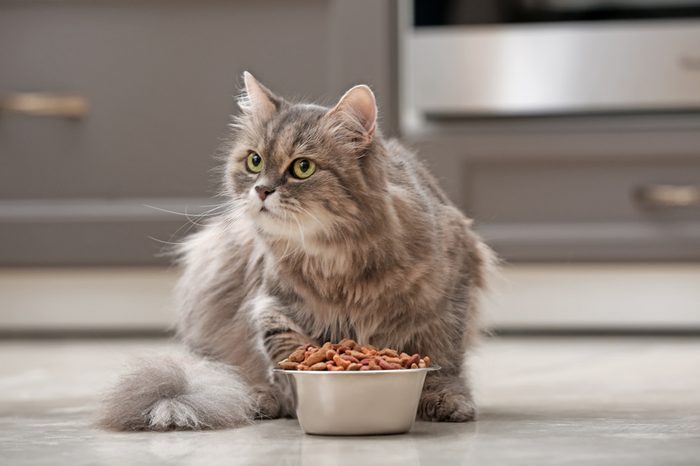
Exotic meats
Another recent trend is for pet foods to use exotic protein sources, such as bison, venison, rabbit, and even kangaroo. Their introduction into our pets’ diets could make it harder to diagnose food allergies, maintains Dr. Freeman in another Tufts paper. “These ingredients were rarely used in the past. But these ingredients are no longer new for many animals, so it is becoming more difficult to both diagnose and treat the small number of pets with food allergies,” she writes.
What to choose also varies on whether you have a cat or a dog. Cats are obligate carnivores, unlike dogs. That means cats need a meat-based diet to stay healthy. Adequate protein intake is especially important for them, but it’s better to opt for more mundane sources, such as chicken or turkey. Here’s some more information on the very best diet for cats, according to vets.
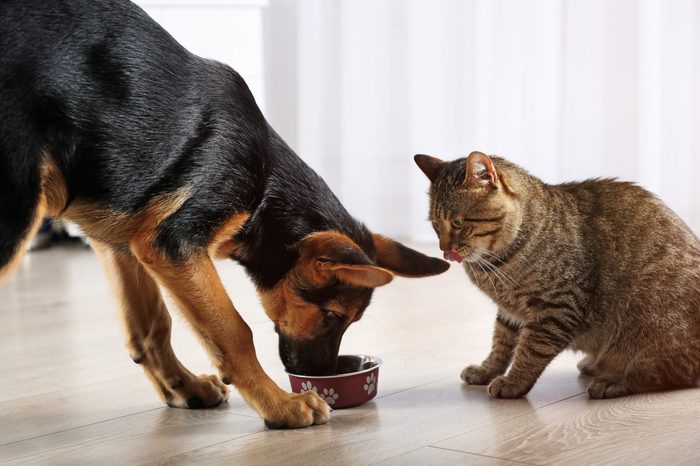
“Human grade”
This term is becoming more popular to describe ingredients in dog food, but it has no legal definition. You don’t need to avoid foods that are marketed with the term, but just remember that a pet food that isn’t labeled as having “human grade” ingredients isn’t automatically of poorer quality than one that is. That said, these are the human foods that are actually good for your dog.
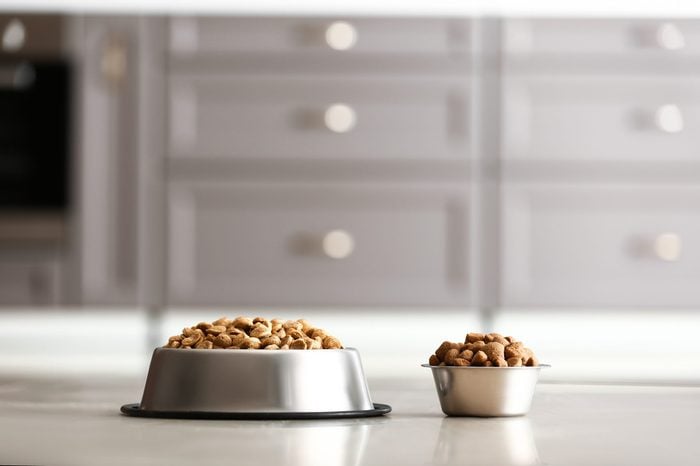
Chicken
How can chicken possibly be bad? It isn’t, but it also isn’t vastly superior to chicken meal, as many people assume. A report published by Ohio State University Veterinary Medical Center explains that meal can often be the better option. “Meat meal is actually a more concentrated source of protein, due to the fact that it does not contain the water content of whole meat, and thus can be added in greater quantities to dry foods to achieve a higher protein content,” the report states. “Meat meal can provide a very economical source of high-quality protein.”
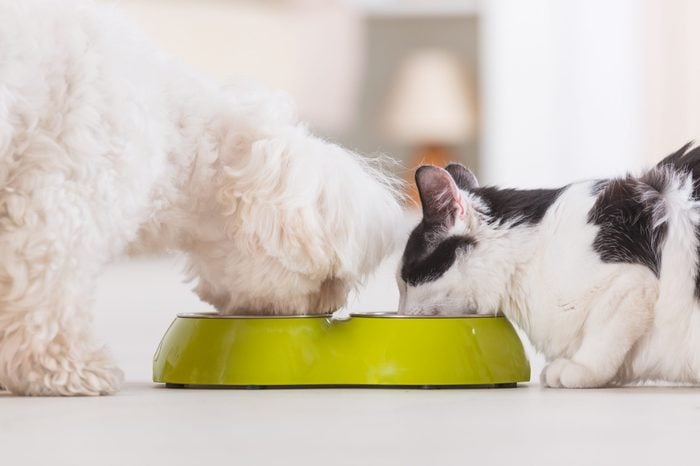
Fresh Angus beef
Again, there’s nothing wrong with beef in and of itself, but in the Tufts report, Dr. Freeman notes an environmental issue. Raising more cattle to feed pets only increases the sustainability issues we’re already confronting when raising them to feed people. Plus, those adjectives, fresh and Angus, are another example of how pet food ingredient labels use phrases to appeal to human appetites.
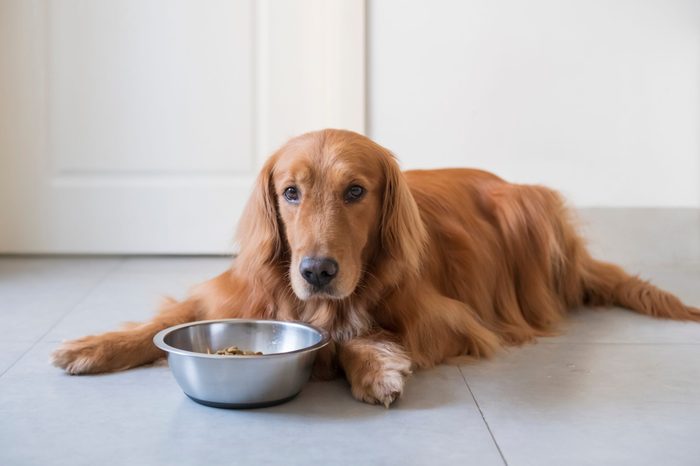
A variety of corn
Manufacturers can break out corn by type on ingredient labels: flaked corn, ground corn, kibbled corn, and more. Since ingredients are listed in descending quantity order, this practice gives the appearance there is less corn in the food than there actually is. Be aware of this if your dog is allergic to corn. From certain foods to popular toys, these are the pet products vets never buy—and neither should you.
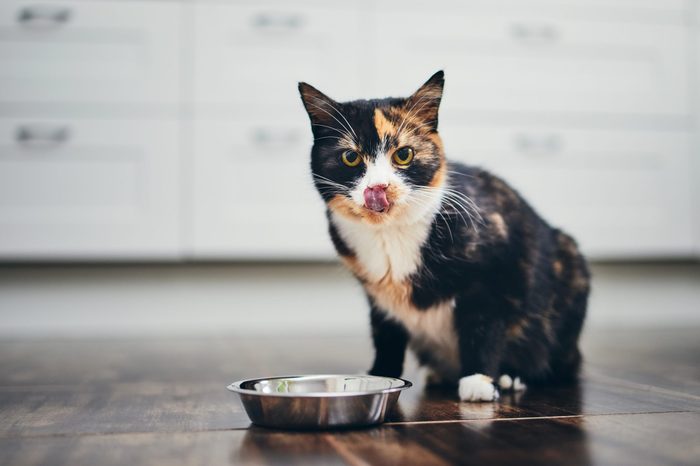
“Extruded”
This one isn’t an ingredient but a common type of processing you often see with treats and some pet food. “I’m not a big fan of extruded treats or food,” says John Tegzes, VMD, a professor at the College of Veterinary Medicine Western University of Health Sciences. That type of processing can “hide lots of inferior, low-quality ingredients. And it’s generally a very processed type of food with lots of inherent safety issues over the years.” Many pet food and treat recalls in recent years have been around extruded products. Instead, Tegzes recommends baked treats, which often still look like the ingredients. “Baked chicken strips look like baked chicken,” he says. “Easy to identify, and simple without overprocessing.” Next, find out the 20 things you’re probably doing that veterinarians wouldn’t.
